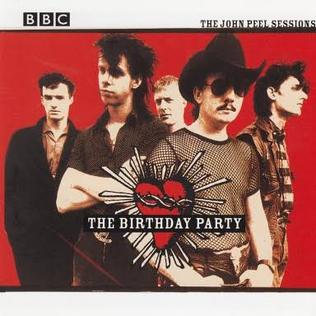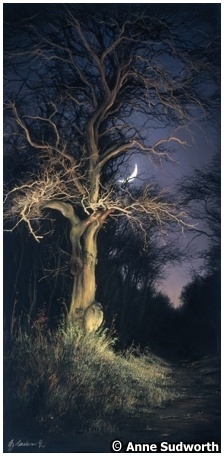Life and work
Mercer is primarily a writer focused on the gothic scene and its music. He has also photographed bands from the punk era onwards. He published a monthly online magazine, The Mick, for over ten years and now hosts a weekly live internet radio show, Mick Mercer Radio as well as providing daily reviews and/or photo galleries on his Substack, Mick Mercer's Panache.
Mercer ran one of the first punk fanzines, Panache, from 1976 to 1992. In 1978, he began writing for British music paper Record Mirror , then freelanced for ZigZag magazine, later becoming its editor until the magazine folded in 1986. During the 1980s, he wrote regularly for the British music weekly Melody Maker , and edited Siren magazine in the 1990s. He has written five books on gothic music, in addition to numerous self-published material.
Mercer's Music to Die For compendium (2009) was described by The Quietus as having "a far greater stylistic variety than the casual observer might imagine", and as being "stuffed full of the best and most artistic music the world has to offer". [1]

Goth is a music-based subculture that began in the United Kingdom during the early 1980s. It was developed by fans of gothic rock, an offshoot of the post-punk music genre. Post-punk artists who presaged the gothic rock genre and helped develop and shape the subculture include Siouxsie and the Banshees, Bauhaus, the Cure, and Joy Division.
Gothic rock is a style of rock music that emerged from post-punk in the United Kingdom in the late 1970s. The first post-punk bands which shifted toward dark music with gothic overtones include Siouxsie and the Banshees, Joy Division, Bauhaus, and the Cure.
Deathrock is a rock music subgenre incorporating horror elements and gothic theatrics. It emerged from punk rock on the West Coast of the United States in the early 1980s and overlaps with the gothic rock and horror punk genres. Notable deathrock acts include Christian Death, Kommunity FK, 45 Grave, and Super Heroines.

Gothic fashion is a clothing style marked by dark, mysterious, antiquated, homogeneous, and often genderless features. It is worn by members of the goth subculture. Typical gothic fashion includes dyed black hair, exotic hairstyles, dark lipstick and dark clothing. Both male and female goths can wear dark eyeliner, dark nail polish and lipstick for a dramatic effect. Male goths use cosmetics at a higher rate than other men. Styles are often borrowed from the punk fashion and can also draw influence from Victorians and Elizabethan fashion. Goth fashion is sometimes confused with heavy metal fashion and emo fashion.

The Birthday Party were an Australian post-punk band, active from 1977 to 1983. The group's "bleak and noisy soundscapes," which drew irreverently on blues, free jazz, and rockabilly, provided the setting for vocalist Nick Cave's disturbing tales of violence and perversion. Their 1981 single "Release the Bats" was particularly influential on the emerging gothic scene. Despite limited commercial success, The Birthday Party's influence has been far-reaching, and they have been called "one of the darkest and most challenging post-punk groups to emerge in the early '80s."
Dark wave is a music genre that emerged from the new wave and post-punk movement of the late 1970s. Dark wave compositions are largely based on minor key tonality and introspective lyrics and have been perceived as being dark, romantic and bleak, with an undertone of sorrow. The genre embraces a range of styles including cold wave, ethereal wave, gothic rock, neoclassical dark wave and neofolk.
A rivethead or rivet head is a person associated with the industrial dance music scene. In stark contrast to the original industrial culture, whose performers and heterogeneous audience were sometimes referred to as "industrialists", the rivethead scene is a coherent youth culture closely linked to a discernible fashion style. The scene emerged in the late 1980s on the basis of electro-industrial, EBM, and industrial rock music. The associated dress style draws on military fashion and punk aesthetics with hints of fetish wear, mainly inspired by the scene's musical protagonists.

Anne Sudworth is a British artist known for her paintings of magical trees and moonlit landscapes.
The Batcave was a weekly club-night launched at 69 Dean Street in central London in 1982. It is considered to be the birthplace of the Southern English goth subculture. It lent its name to the term Batcaver, used to describe fans of the original gothic rock music, who would adorn themselves in Batwing coffin necklaces to distinguish themselves from other goth clubs.
The Bus Station Loonies are a British cabaret punk band from Plymouth, England. They have been described as a cross between Splodgenessabounds and Crass. Original Loonies Tony Popkids (drums) and Chris "Felcher" Wheelchair, sharing a mutual love of such U.S. punk outfits such as The Dickies, still continue with the band today, having recruited approximately 30 other band members over 18 years.
Ethereal wave, also called ethereal darkwave, ethereal goth or simply ethereal, is a subgenre of dark wave music that is variously described as "gothic", "romantic", and "otherworldly". Developed in the early 1980s in the UK as an outgrowth of gothic rock, ethereal wave was mainly represented by 4AD bands such as Cocteau Twins, This Mortal Coil, and early guitar-driven Dead Can Dance.
Cold wave is a loosely defined music genre that emerged in Europe in the late 1970s, characterized by its detached lyrical tone, use of early electronic music instruments and a minimalist approach and style. It emerged from punk rock bands who, influenced by early electronic groups such as Kraftwerk, made use of affordable portable synthesizers such as the Korg MS-20.
The Toronto goth scene, the cultural locus of the goth subculture in Toronto, Ontario, Canada and the associated music and fashion scene, has distinct origins from goth scenes of other goth subcultural centres, such as the UK or Germany. Originally known as the "Batcavers", the term "goth" appeared only after 1988, when it was applied to the pre-existent subculture. Distinctive features included internationally recognized gothic and vampiric fashion store 'Siren', a goth-industrial bar named 'Sanctuary: The Vampire Sex Bar', and Forever Knight, a television series about an 800-year-old vampire living in Toronto. In Toronto, the goths did not seek to reject mainstream status, and achieved partial acceptance throughout the mid to late 1990s.

Cauda Pavonis are an English deathrock band founded in 1998, by Su Farr and Dave Wainwright. Originally conceived as a 'dark romantic' experience, Cauda Pavonis broke onto the UK goth circuit supporting acts such as Star Industry and Inkubus Sukkubus. At the outset Cauda Pavonis were noted for their consciously-minimalist synthesized melodies and their use of live drums. They were described by Mick Mercer in his book 21st Century Goth as a "Dark duo from UK with a bright future" and by Starvox as "The most old school sounding goth since Rozz Williams hung himself". Since then the line-up has grown and the band have appeared twice at the Whitby Gothic Weekend and the Wave-Gotik-Treffen. In 2003 and again in 2007, Cauda Pavonis were the focus of the ITV television programme, Magick Eve.
The Flowers of Romance was a pioneering punk and gothic rock band of the underground Greek rock scene from 1981 to 1998. The band's energetic sound and combinations of several styles of rock led to their prevalence within the underground Greek rock scene for nearly two decades, and a belief by many that they were the top Greek gothic rock group in history.

Screaming Banshee Aircrew were an English rock band originating from York. Their varied music appealed to the Gothic scene, and their energetic performances attracted many fans across the UK. They were disbanded in July 2010, and many of the band members went on to join other bands.
Natasha Scharf is an author, disc jockey, presenter and journalist best known for her work publicising gothic, rock, metal and progressive metal music and subcultures. Since 2019, she has been the Deputy Editor of Prog.
Die Laughing are an English goth band formed in 1986 by John Berry.
Party Day were an English goth/indie rock band formed in 1981 in Wombwell near Barnsley, South Yorkshire, England, originally a four-piece consisting of guitarists Martin Steele, Greg Firth, bassist Carl Firth and drummer, Mick Baker. Their sound was described as being "hard knuckleduster goth with post-punk overtones".





